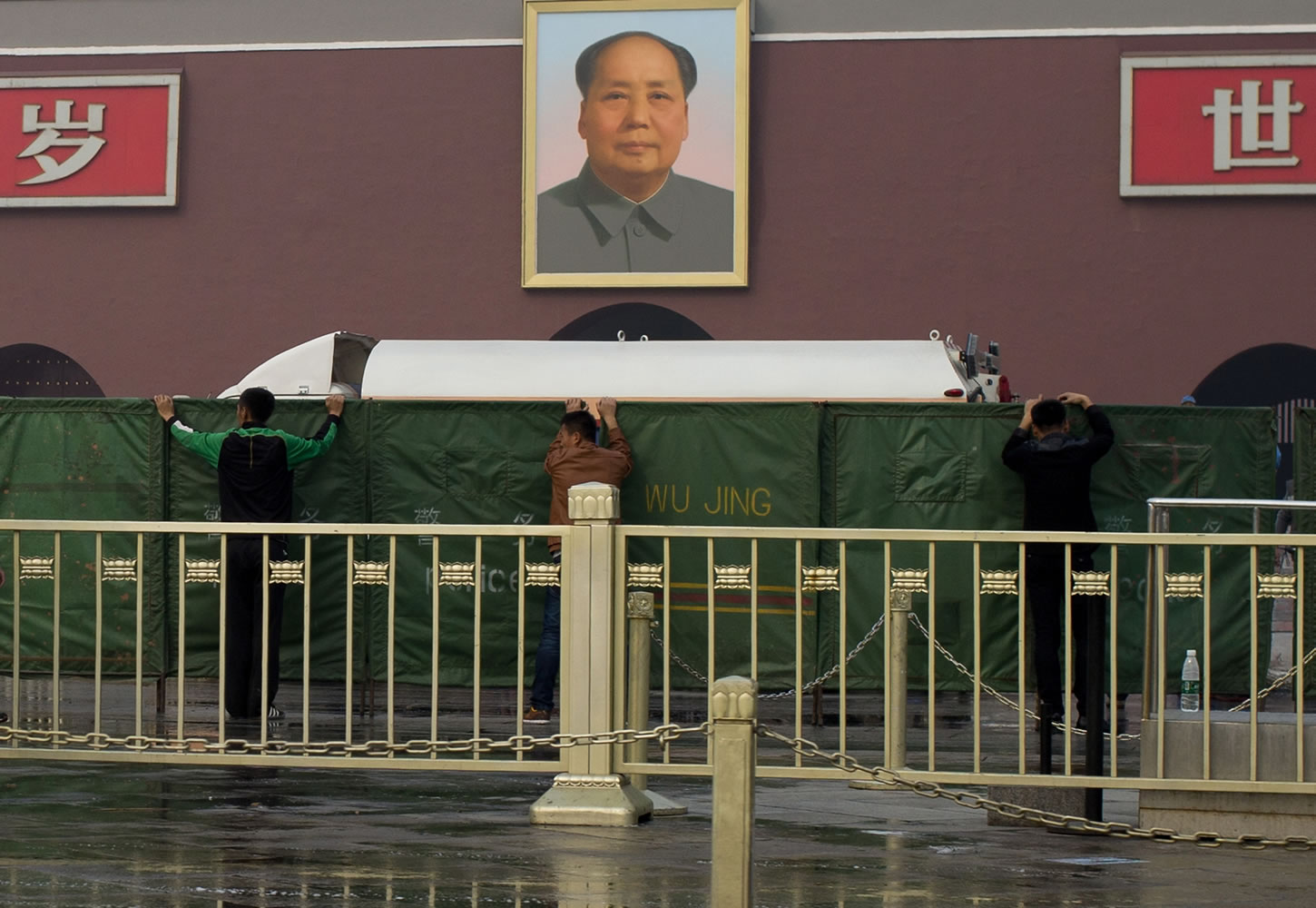BEIJING — An SUV plowed into a crowd in Beijing’s iconic Tiananmen Square on Monday and then crashed and burst into flames, killing two pedestrians and the three occupants of the vehicle and injuring 38 others, police and state media said.
Police flooded the historic square, which is perhaps the country’s most sensitive and closely guarded public venue — as well as a major destination for domestic and foreign tourists. It was the scene of a bloody crackdown on pro-democracy protests in 1989.
The cause or possible motive for the crash remained unclear. One foreign tourist interviewed by the Reuters news agency, who declined to give her name, reported hearing an explosion before seeing the smoke. Images posted on social media sites showed the vehicle engulfed in flames, and a thick plume of black smoke rising into the air.
Hundreds of posts about the incident surfaced on social media sites in China but were quickly deleted by censors, according to FreeWeibo.com, a website that tracks such activity. Among the deleted posts were some that showed images of the burning vehicle and others that suggested the crash might have been a case of self-immolation, a widely used form of protest here.
Internet searches for “Tiananmen car accident” also were blocked. China’s state-owned news agency Xinhua carried a brief report of the crash, but reports and microblog posts by other Chinese media outlets were deleted. The incident was not mentioned on state television’s Chinese-language evening news.
The SUV burst through the security barriers lining the square before slamming into one of the stone bridges leading to the former imperial palace known as the Forbidden City, Beijing police said on their official microblog. The vehicle ignited not far from an imposing portrait of Mao Zedong, communist China’s founding father, which hangs from the ancient red-painted Tiananmen Gate.
One of the few Chinese newspapers attempting to report on the incident, the liberal Southern Metropolis Daily, interviewed a 23-year-old Filipino student who was hospitalized along with her father and sister. She said she did not know the condition of her mother, who had been with them.
The four were coming out of the Forbidden City when the car rushed toward them at high speed, said the student, who was identified by her first name, Francesca. “I heard the horn of the car, but it was too late before I realized it,” she told the newspaper, according to its Weibo blog account. “My mind went blank. When I came to, all of us were lying on the ground.”
Square’s history rich
The newspaper’s online report was later deleted. Qianlong.net, a news website run by the Beijing city government, said one person killed in the incident was a female tourist from the Philippines. But there was no way to verify whether that tourist was Francesca’s mother.
Mao’s regime built Tiananmen Square as a symbol of his power. He proclaimed the founding of the People’s Republic of China from Tiananmen Gate in 1949. China’s leaders still address crowds and watch parades from that spot on important national holidays.
The mausoleum that houses Mao’s embalmed body lies in the southern half of the square, while the Great Hall of the People, China’s parliament, sits on its western side. Not far to the west lies Zhongnanhai, the compound where many of China’s government leaders live and work.
The square retains an illustrious status for many Chinese, including those who protest against the government. In 2011, a protester set himself on fire in the square in an incident not reported by Chinese media. In 2009, three people whose car was pulled over by police on their way to the square set themselves on fire on a busy Beijing shopping street. In recent years, fire extinguishers have been placed throughout the square as a safety precaution.
A BBC news team was detained at the square for about 20 minutes after the incident, Asia bureau chief Jo Floto said. The channel’s cable broadcasts in China were blocked when they tried to air a report on it. Two journalists for the Agence France-Presse news agency were also briefly detained, and digital images were deleted from their equipment, the agency reported.
The metro station closest to Tiananmen Square was closed for more than three hours after the crash. Police also guarded Beijing Hospital, where many of the victims were taken. One officer was overheard asking hospital staff about the injured and whether any of the victims came from ethnic minority groups.
At least 122 Tibetans have set themselves on fire since February 2009 protesting against Chinese rule in their homeland, according to exile groups.



